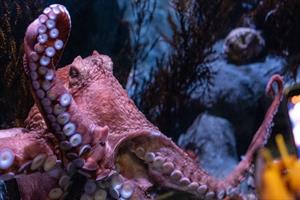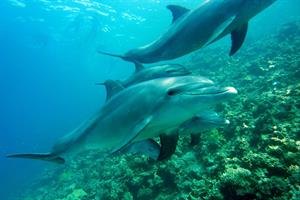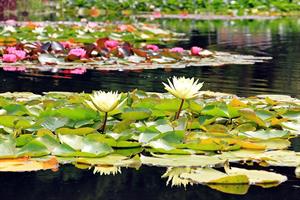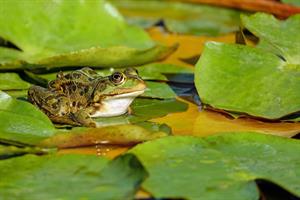
PUMPA - SMART LEARNING
எங்கள் ஆசிரியர்களுடன் 1-ஆன்-1 ஆலோசனை நேரத்தைப் பெறுங்கள். டாப்பர் ஆவதற்கு நாங்கள் பயிற்சி அளிப்போம்
Book Free DemoAquatic habitats
Habitats whose mode of survival is in water are known as aquatic habitats. The habitats of plants and animals which lives in water are said to live in aquatic habitats.
Ocean, ponds, lakes, and rivers are examples of aquatic habitats.
If the water is freshwater, then it is called fresh water habitat. If the aquatic habitat has marine or saltwater, then it is called marine habitat.
Ocean water has salt dissolved in it and is thus a marine habitat. While ponds, lakes, and rivers are freshwater habitat.
Oceans
Adaptations observed in Ocean animals:
1. Streamlined body to move easily in water.
2. Squids and octopus live deep in the ocean, near the bed of the ocean and catch prey near them. But, when they move in water, the body becomes streamlined.

3. Gills are used in respiration, where it uses oxygen dissolved in water.
4. Whales, Dolphins use nostrils or blowholes present on the upper part of the heads for breathing in air when they reach near the surface of the water. Hence, they can stay in water for a long time without breathing.

Ponds, lakes and rivers:
Plants that live in freshwater habitats develop some special adaptations. Some plants have roots fixed in the soil at the bottom, whereas, some float on water (example water hyacinth), and some are submerged in water.
Adaptations observed in aquatic plants which are fixed to sea bed:
1. Roots of the aquatic plants are reduced in size, and the function is to hold the plant in the sea bed.
2. Stems are long, hollow, light. Stem grow up to the surface when a flower and leaf float on surface.
Example:
Lotus, Water lily.

Adaptations observed in aquatic plants which are completely submerged:
1. All the parts are present underwater
2. Some have narrow, thin ribbon-like leaves that bend in water
3. The leaves are covered by a waxy layer that protects the leaves from the excess water.
Example:
Hydrilla, Vallisneria.
Adaptations observed in animals like frog:
1. Frog lives in ponds. They can also live on the land.
2. Frogs have webbed feet which aid in swimming.
3. They have strong back legs which aids in leaping and catching the prey.
